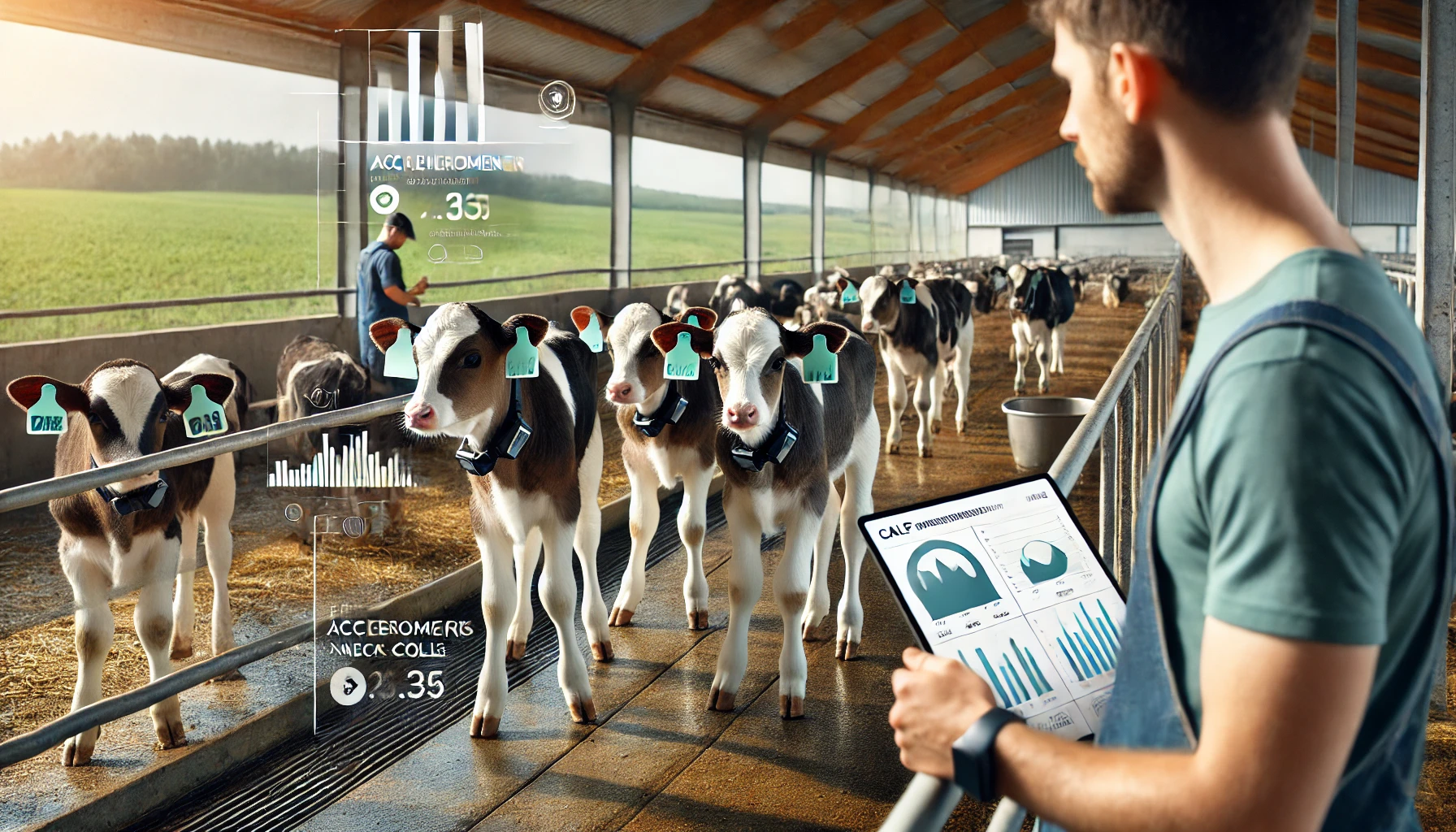Innovative Monitoring System Improves Calf Welfare and Farm Productivity Through Real-Time Data
Researchers developed a digital tool using accelerometer neck-collars and machine learning models to monitor pre-weaned calf behaviors, enhancing animal welfare through continuous, accurate tracking. This innovative system allows early detection of health issues, improving calf well-being and farm productivity.

Researchers from University College Dublin, along with collaborators from other institutions, have developed an innovative digital tool to monitor the behavior of pre-weaned calves using accelerometer neck-collars. This study aims to enhance animal welfare by offering a comprehensive system to track calf activities, crucial for early detection of health issues and stress. The tool leverages machine learning models to classify calf behaviors based on data collected from 3-D accelerometers attached to neck collars. The data collection process involved filming 30 pre-weaned calves over two months, resulting in 27.4 hours of annotated observation.
Machine Learning Models for Accurate Behavior Classification
The study's objective was to create machine learning models that could accurately classify the behaviors of pre-weaned calves. Two primary models were developed: a Random Forest model to distinguish between active and inactive behaviors, and a RidgeClassifierCV model using ROCKET features to classify more specific behaviors such as lying, running, and drinking milk. The Random Forest model achieved a balanced accuracy of 0.92, while the RidgeClassifierCV model achieved a balanced accuracy of 0.84. These models were then integrated into a Python-based dashboard, which displays individual calf behavior metrics derived from the raw accelerometer data.
Importance of Continuous Monitoring for Calf Welfare
The necessity for this technology arises from the importance of continuous monitoring to maintain calf welfare, which is impractical through human observation alone. Stress and poor welfare in calves can lead to severe consequences like weight loss, disease, and even death. By using accelerometers, which are both versatile and capable of long-term function, the tool provides a practical solution for ongoing monitoring. The early detection of stress and health issues in calves is crucial for preventing long-term physiological changes and death, especially under prolonged stress conditions. Continuous behavior monitoring is necessary to detect disturbances in young calves, such as stressful events or diseases, and accelerometers provide an effective means to achieve this.
Advanced Techniques for Improved Accuracy
Previous studies have demonstrated the effectiveness of accelerometer-based monitoring in various livestock, but this study is one of the first to focus extensively on dairy calves. The researchers applied advanced techniques such as ROCKET, known for its ability to handle diverse temporal patterns without domain-specific knowledge. This innovative approach allows for more accurate classification of calf behaviors, making it possible to detect subtle changes in behavior that may indicate stress or health issues. The study involved a detailed methodology for data collection and model development. The calves were housed in grouped pens and equipped with accelerometer sensors, and their behaviors were meticulously annotated from video recordings. The accelerometer data was segmented into three-second windows and aligned with the observed behaviors, creating a robust dataset for training the models. Model tuning was performed with 10-fold repeated hold-out validation using a grid search process, ensuring the models were well-optimized. The performance of the models was tested on a separate set of calves to ensure generalizability.
User-Friendly Dashboard for Real-Time Insights
The resulting dashboard is designed to be user-friendly, allowing farmers and animal scientists to easily upload accelerometer files and view detailed behavior metrics. These metrics include activity ratios over time, proportions of specific behaviors, and comparisons of day and night activities. The dashboard uses plots, pie charts, and tables to efficiently interpret the data, providing a clear visual representation of the calves' behavior. This real-time data enables quick responses to health issues and better decision-making in managing calf welfare. The dashboard's ability to filter data by calf ID and date, and display information such as breed, birth date, coat color, and housed pen number, adds to its functionality. For each selected time period and calf, the dashboard provides graphs of hourly activity ratios, pie charts showing total activity versus inactivity, and tables summarizing the proportions of specific behaviors. The predictions for each accelerometer timestamp are also available in a table format, allowing for further analysis.
The development of this digital tool represents a significant advancement in livestock monitoring technology. By providing accurate and continuous monitoring, helps in the early detection of stress and health issues in calves, ultimately leading to better welfare and productivity. The study highlights the potential of combining accelerometer data with machine learning to revolutionize animal husbandry practices. This tool not only improves the welfare of calves but also enhances farm productivity and the quality of agricultural products. By prioritizing animal welfare, farmers can build trust with consumers, who are increasingly concerned about the ethical treatment of animals. Overall, the study's findings underscore the importance of innovative technologies in modern agriculture and their role in promoting sustainable and humane farming practices.
- FIRST PUBLISHED IN:
- Devdiscourse
ALSO READ
Fossils, Spacewalks, and Rocket Launch Contracts: Current Science News Briefs
Ivory Coast's Economic Boom: Oil Investments Set to Skyrocket
Kerala's Vegetable and Fish Prices Skyrocket Amid Trawling Ban and Climate Woes
Ixigo Shares Skyrocket to New Heights with 78% Premium
Ixigo Shares Skyrocket on Stock Market Debut










